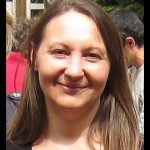Lien vers Pubmed [PMID] – 30783002
Antimicrob. Agents Chemother. 2019 May;63(5)
Candida albicans is known for its ability to form biofilms, which are communities of microorganisms embedded in an extracellular matrix developing on different surfaces. Biofilms are highly tolerant to antifungal therapy. This phenomenon has been partially explained by the appearance of so-called persister cells, phenotypic variants of wild-type cells, capable of surviving very high concentrations of antimicrobial agents. Persister cells in were found exceptionally in biofilms, while none were detected in planktonic cultures of this fungus. Yet, this topic remains controversial, as others could not observe persister cells in biofilms formed by the SC5314 laboratory strain. Due to ambiguous data in the literature, this work aimed to reevaluate the presence of persister cells in biofilms. We demonstrated that the isolation of “persister cells” as described previously was likely to be the result of the survival of biofilm cells that were not reached by the antifungal. We tested biofilms of SC5314 and its derivatives, as well as 95 clinical isolates, using an improved protocol, demonstrating that persister cells are not a characteristic trait of biofilms. Although some clinical isolates are able to yield survivors upon the antifungal treatment of biofilms, this phenomenon is rather stochastic and inconsistent.


